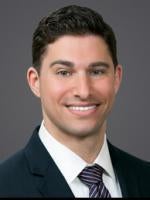On March 25, 2020, New York State published highly anticipated guidance concerning the state’s emergency paid quarantine leave law. The guidance provides answers to frequently asked questions (FAQs) addressing, among other things, benefits, eligibility, and the application process.
Governor Andrew Cuomo signed the paid quarantine leave law on March 18, 2020, in response to the COVID-19 crisis. As a reminder, paid quarantine leave and benefits under the law are triggered only when an employee is subject to a mandatory or precautionary order of quarantine or isolation issued by a government agency or board of health. An employee may also be entitled to New York State Paid Family Leave under the law to care for a dependent child who is subject to such a quarantine or isolation order.
Unfortunately, the hastily-drafted emergency legislation was rife with ambiguities and undefined terms. For example, the law—which, among other benefits, provides a certain number of paid leave days depending on the size of the employer—did not specify whether the paid leave allotment referred to calendar days or workdays, and whether part-time employees would receive pay for days on which they would not have been scheduled to work.
New York’s recently published guidance provides answers to some of these questions. Most importantly, the guidance clarifies that the 5-day and 14-day paid leave periods refer to “calendar days,” and that employees are entitled to pay only for days on which they otherwise would have worked. As stated in the guidance:
Is the number of paid days work or calendar days? The number of paid days is calendar days, and the pay required should represent the amount of money that the employee would have otherwise received for the 5 or 14 day period.
How many days of leave are part-time employees required to be paid for? Part-time employees should be paid for the number of days/amount of time during 5 or 14 day period that they are required to receive pay that they would have otherwise received had the employer’s operations continued in its normal due course.
The guidance clarifies that, “[e]mployees who work a fixed schedule or are paid a salary should simply continue to receive pay for the applicable period.” With regard to “hourly, part-time, commissions salespeople, and other employees who are not paid a fixed wage,” the guidance asks employers to “determine the employee’s pay by looking at a representative period of time to set the employee’s average daily pay rate.” “Representative period of time” is not defined.
Notably, paid leave under the quarantine leave law must be separate and apart from other accrued sick leave or paid time off. In other words, paid quarantine leave days cannot be charged against any other paid leave accruals.
The guidance also provides instructions for employees to apply for quarantine-related paid family leave and disability benefits, including a link to the application.
The guidance is silent on the issue of whether an employee who is quarantined more than once would be entitled to a new paid leave period for each quarantine.




 />i
/>i

